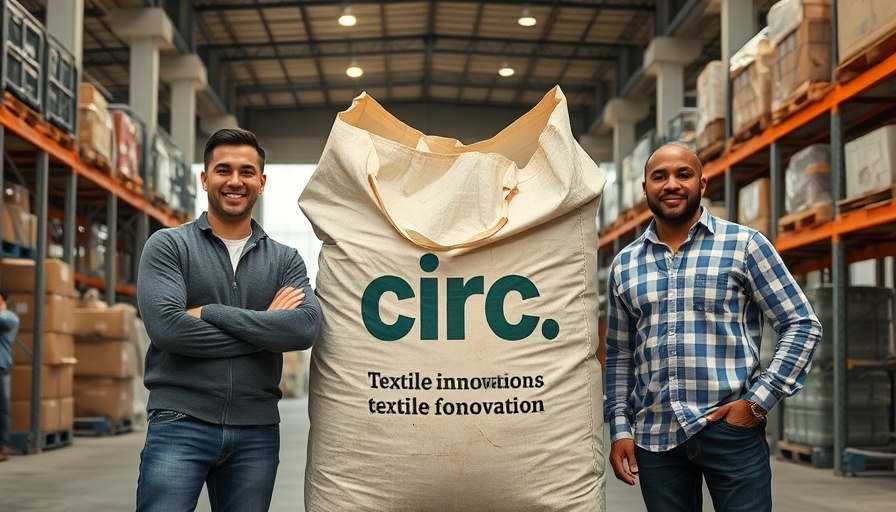
Revolutionizing Clothing Recycling: The Future of Fashion
In a bold move, Virginia-based startup Circ is venturing into the textile recycling industry with an investment of approximately $500 million. Their innovative approach aims to tackle the daunting problem of textile waste by developing a unique recycling process that separates cotton and polyester fibers, a challenging feat in the recycling world.
Why Textile Recycling Matters
The fashion industry is notorious for its significant contributions to global waste. In the United States alone, it’s reported that only 15% of clothing waste is either reused or recycled, leading to about 100 pounds of textile waste per person each year. Circ’s initiative thus addresses a critical need—reducing landfill impact while creating sustainable alternatives for fabric disposal.
The Mechanism Behind Circ's Innovation
Circ uses what it describes as a "fancy pressure cooker for textiles"—a sophisticated device designed to efficiently recover both cotton and polyester from mixed fabric waste. COO Conor Hartman explains that the process involves breaking down polyester while preserving cotton, allowing each fiber to be purified for reuse. This method presents a significant advancement over conventional recycling techniques, which often lead to a total loss of one material.
Choosing the Right Location: Why France?
The decision to build Circ’s first facility in Saint-Avold, France, rather than North America, was strategic. After evaluating 80 potential industrial sites, factors like an energy-efficient local grid, climate-friendly policies, and a skilled workforce influenced their decision. The French government offers a competitive support package for companies like Circ, aiming to fortify green industry initiatives. Hartman remarked, "France has been investing in green industry and carbon responsible businesses, creating a hospitable environment for us." This proactive environment is crucial as Circ looks to scale its operations globally.
Challenges and Government Incentives
The changing landscape of U.S. climate legislation, especially under previous administrations, has brought uncertainty into the clean technology sector. Even so, Circ is undeterred. Hartman stated, “We face textile challenges everywhere clothing is worn. Our plans extend globally.” This resilience illustrates a growing shift in how companies view sustainability, not just as an obligation but as an opportunity for growth and expansion.
Future Prospects and Job Creation
Once operational, the recycling plant in France is expected to process over 77,000 tons of polycotton-blend fabric annually, creating around 200 direct and indirect jobs. This offers hope not just for waste management but also for boosting local employment and economy in socially responsible ways.
What This Means for Business Owners and Sustainability Advocates
For consultants, coaches, and small business owners, Circ’s journey delivers profound insights into innovating within their operations. It demonstrates the value of investing in sustainable practices and embracing technologies that align with environmental responsibility. Startups aiming for growth can take inspiration from Circ’s commitment to addressing significant challenges with potential financial backing.
Looking Ahead: A Global Vision for Textile Recycling
Circ aims to establish additional facilities around the world as part of its expansion strategy. This ambition not only highlights the scalability of its model but also calls attention to the importance of global cooperation in tackling issues like textile waste. Entrepreneurs looking to enter this field can learn from Circ’s approaches to mitigating risks, leveraging technology, and building supportive partnerships.
Conclusion: The Power of Transformation in the Textile Industry
Circ’s innovative approach to textile recycling presents a powerful example for industries grappling with waste management. Their successful implementation of technology and focused vision illustrates the transformative potential that arises when businesses combine sustainability with profitability. As we look forward to the formal launch of their facility in 2028, the stakes for the fashion industry have never been higher.
If you’re a small business owner or aspiring entrepreneur, consider how you might integrate sustainable practices into your own strategies. The environmental impact, community benefits, and potential for innovation make this a worthwhile endeavor.
 Add Row
Add Row  Add
Add 






Write A Comment